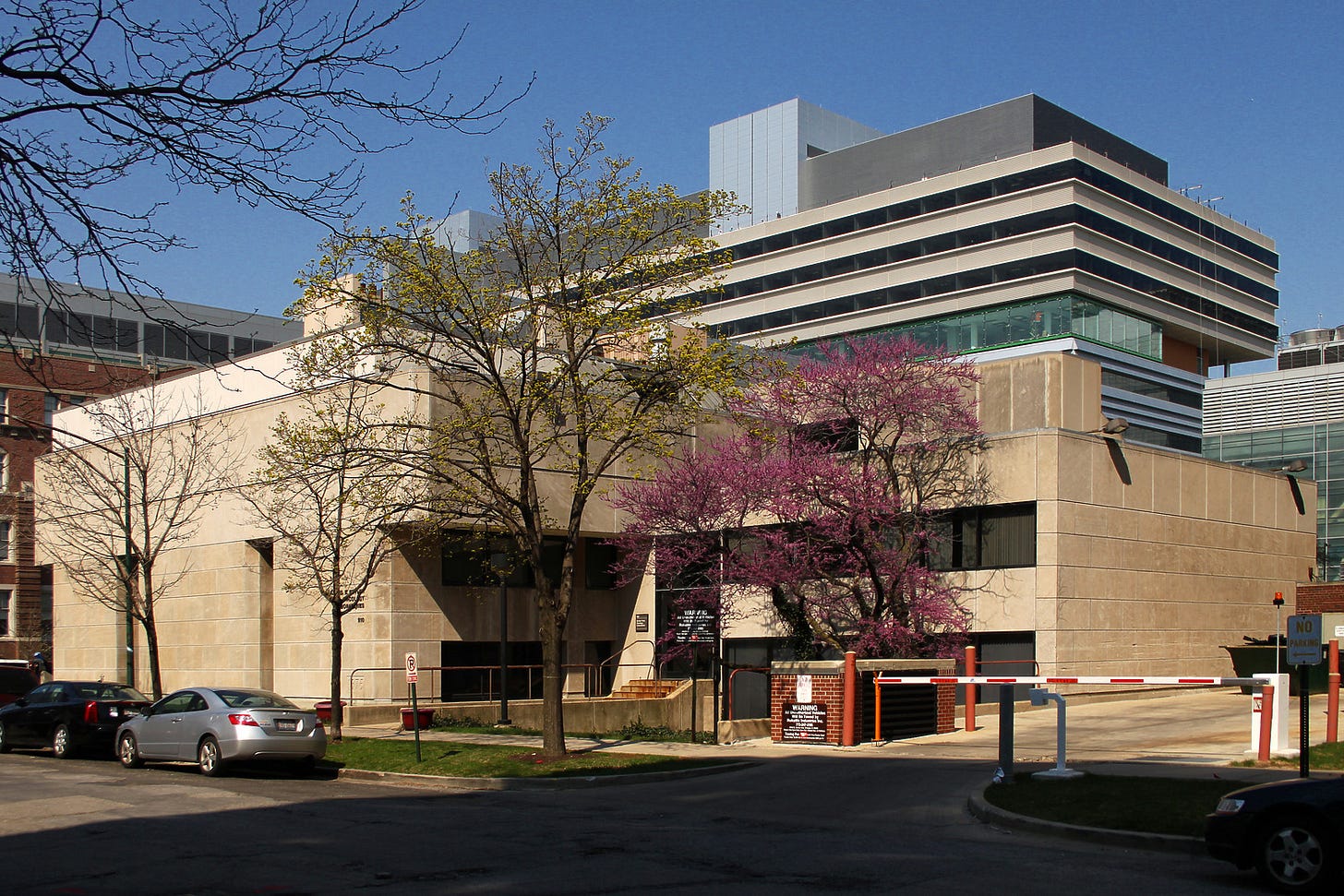How Foreign Aid Helps Prevent Marburg, Ebola, and Other Viruses from Reaching U.S. Shores
Unfortunately, these efforts stopped last week
As a graduate student in virology at The University of Chicago my research was conducted in the Kovler Viral Oncology lab. It was equipted to be a biosafety level 3 lab, complete with double doors, proper air handling - taking the virus seriously.
Such facilities are expensive, but we need them to study viruses and keep them in the lab, not out among the public.
But what do you do if you are one of the poorest countries of the world with an outbreak of a deadly virus that moves quickly? They don't have the money to build such facilities, but we (the USA) do.
Foreign aid has been crucial role to safeguarding global health and preventing deadly viruses like Marburg and Ebola from spreading internationally, including to the United States. These hemorrhagic fevers, caused by highly infectious viruses, are often first identified in remote regions of Africa. Without proper intervention, they pose significant risks of global transmission. Here's how foreign aid helps:
1. Strengthening Surveillance and Early Detection
Foreign aid supports the establishment of disease surveillance systems in countries where outbreaks are likely to occur. These systems enable local health authorities to:
Identify cases early through testing and monitoring.
Track the spread of the virus using real-time data.
Share information with global health organizations like the World Health Organization (WHO) and Centers for Disease Control and Prevention (CDC).
By identifying outbreaks at their source, the risk of these viruses spreading internationally is significantly reduced.
2. Funding Outbreak Response Teams
Foreign aid funds the deployment of rapid response teams that:
Contain outbreaks through isolation and quarantine protocols.
Train local healthcare workers in proper infection prevention and control measures.
Provide resources such as personal protective equipment (PPE), ensuring the safety of those treating infected individuals.
Stopping outbreaks at their origin is critical to preventing their spread across borders. This is how Ebola was kept out of the USA.
3. Building Healthcare Infrastructure
In many regions where Marburg and Ebola outbreaks occur, healthcare infrastructure is weak. Foreign aid helps:
Build treatment centers capable of managing infected patients.
Equip labs to conduct rapid diagnostic tests.
Train healthcare workers to handle infectious diseases safely.
A robust healthcare system reduces the likelihood of outbreaks spiraling out of control and spreading beyond the region. Countries like Tanzania where we recently had three people with Marburg do not have the infastructure, but our foreign aid has provided the necessary equipment and structure to keep Marbug there.
4. Supporting Vaccine Research and Distribution
Foreign aid funds the development and distribution of vaccines for viruses like Ebola and Marburg. For example:
The rVSV-ZEBOV vaccine for Ebola has been instrumental in controlling outbreaks in the Democratic Republic of Congo.
Ongoing research into Marburg vaccines is supported by global partnerships, including U.S. agencies like the National Institutes of Health (NIH).
Vaccination campaigns in outbreak zones not only save lives but also decrease the chances of these viruses crossing borders.
Polio vaccinations in Gaza for over 422,000 children prevented an outbreak. Prevent an outbreak there and we decrease the odds of that virus coming back to the US.
5. Preventing Spillover Events
Many deadly viruses originate from animal-to-human transmission (zoonotic spillover). Foreign aid helps fund:
Programs that reduce human contact with high-risk wildlife, such as bats (natural hosts for Marburg and Ebola).
Education campaigns to teach communities safer practices around handling animals.
Monitoring of wildlife populations to detect potential virus reservoirs.
By addressing the root causes of zoonotic spillovers, foreign aid minimizes the risk of new outbreaks.
6. Enhancing Global Collaboration
Foreign aid fosters collaboration between countries, enabling:
Shared resources and expertise in managing outbreaks.
Global health initiatives, like the Global Health Security Agenda (GHSA), which strengthens pandemic preparedness.
Support for organizations like the WHO, which coordinates international responses to outbreaks.
This collaboration ensures that no single country bears the burden of preventing pandemics alone. Sadly this also ended with an executive action by our President.
Why It Matters for the U.S.
Investing in global health through foreign aid is not just altruistic—it’s strategic. Stopping outbreaks at their source is significantly more effective and cost-efficient than managing them once they reach U.S. borders. The cost of a single outbreak in the U.S.—in terms of lives, resources, and economic impact—far outweighs the investment in preventive measures abroad.
By supporting foreign aid, the U.S. protects its own citizens while contributing to global health security. In an interconnected world, a virus anywhere is a potential threat everywhere, making international collaboration and aid indispensable.
Sadly, that ended when a 90 day pause in foreign aid was implemented. And more, like the 49 countries we assist to monitor H5N1 (bird flu). The real-world consequences can be deadly. Sound familiar?
Let me know what you think.




Very informative. Thank you